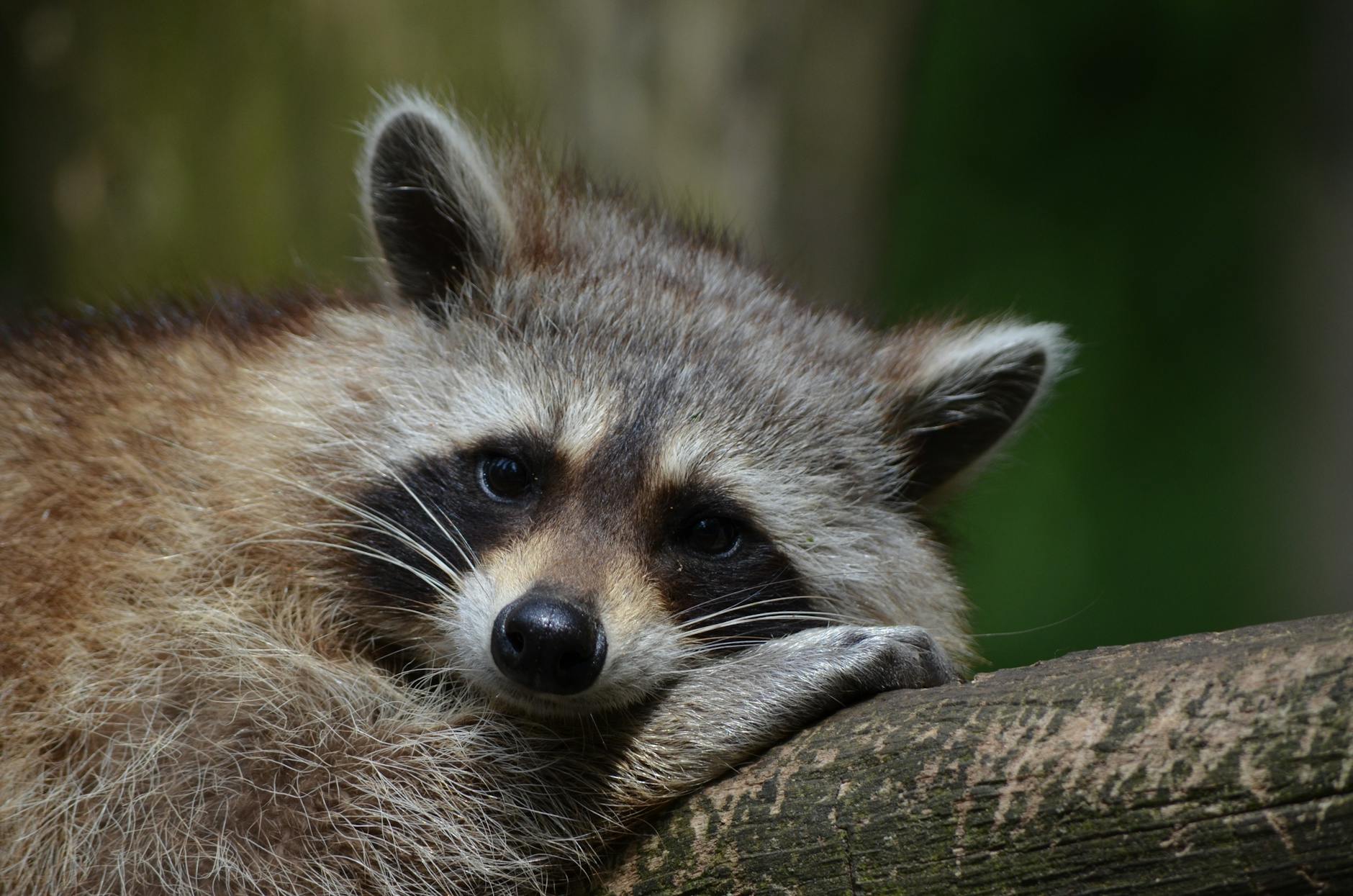
With their distinctive black “masks,” dexterous paws, and curious nature, raccoons have earned a reputation as clever, mischievous creatures. Whether they’re raiding your garbage can or washing food in a stream, these adaptable mammals have carved out a niche for themselves in both wild and urban environments.
Let’s take a closer look at these nighttime adventurers.
What Is a Raccoon?
Raccoons (Procyon lotor) are medium-sized mammals native to North America, although they’ve spread to parts of Europe and Japan. They belong to the Procyonidae family, which also includes animals like coatis and kinkajous.
Raccoon Stats:
- Length: 2–3 feet (including tail)
- Weight: 10–30 pounds
- Lifespan in the wild: 2–3 years (up to 20 in captivity)
- Diet: Omnivore
- Habitat: Forests, wetlands, suburbs, and cities
Smart and Sneaky
Raccoons are known for their intelligence—studies have shown they can remember solutions to tasks for years. Their front paws are extremely sensitive and capable, almost like human hands. They can unlatch cages, open jars, unzip tents, and even solve puzzles.
This adaptability is a big reason raccoons thrive in urban areas. To them, a garbage bin is just another buffet.
Nocturnal by Nature
Raccoons are nocturnal, meaning they’re most active at night. During the day, they rest in dens made in hollow trees, abandoned buildings, attics, or burrows.
At night, they forage for food—and they’re not picky eaters.
What Do Raccoons Eat?
Pretty much anything. Raccoons are opportunistic omnivores and eat:
- Fruits and berries
- Insects and worms
- Frogs, eggs, and small animals
- Crayfish and shellfish
- Pet food, trash, compost scraps
The urban raccoon diet may include pizza crusts, sandwich wrappers, and anything else they can get their paws on.
Do They Really Wash Their Food?
That famous “washing” behavior has a myth behind it. Raccoons don’t actually clean their food—scientists believe the behavior stems from their highly sensitive forepaws. Wetting their paws may help them better feel and manipulate objects. In captivity, with access to water, this can look like washing.
Raising Raccoon Kits
Raccoon mating season happens in late winter to early spring. Mothers give birth to 2–5 babies (kits) in a secure den and care for them for several months. During this time, they teach them how to forage and climb. Kits may stay with their mothers through the fall.
Urban Wildlife Champions
Raccoons have flourished in human-dominated environments. They’re often spotted in neighborhoods, parks, and even inside homes or garages. Their ability to adapt and solve problems makes them one of the most successful urban mammals.
But their boldness can also bring them into conflict with humans.
Should You Be Worried?
Raccoons are wild animals and can carry diseases like rabies or raccoon roundworm. They should never be approached, fed, or kept as pets. If one is acting strangely or gets into your attic, contact a local wildlife control expert.
Raccoons Around the World
Although native to North America, raccoons have been introduced to parts of Europe and Japan, where they are sometimes considered invasive. In their new habitats, they can outcompete native species and impact local ecosystems.
Final Thoughts
Clever, curious, and undeniably charismatic, raccoons are a testament to adaptability. Whether in the forest or the suburbs, they continue to surprise us with their resourcefulness and charm.
Just make sure your garbage can lid is tight.
Want to learn more about raccoon relatives like coatis or kinkajous? Check out our other wildlife profiles!
More photos below ↓










Disclaimer: This blog post is for edutainment purposes only and may not be entirely accurate.






